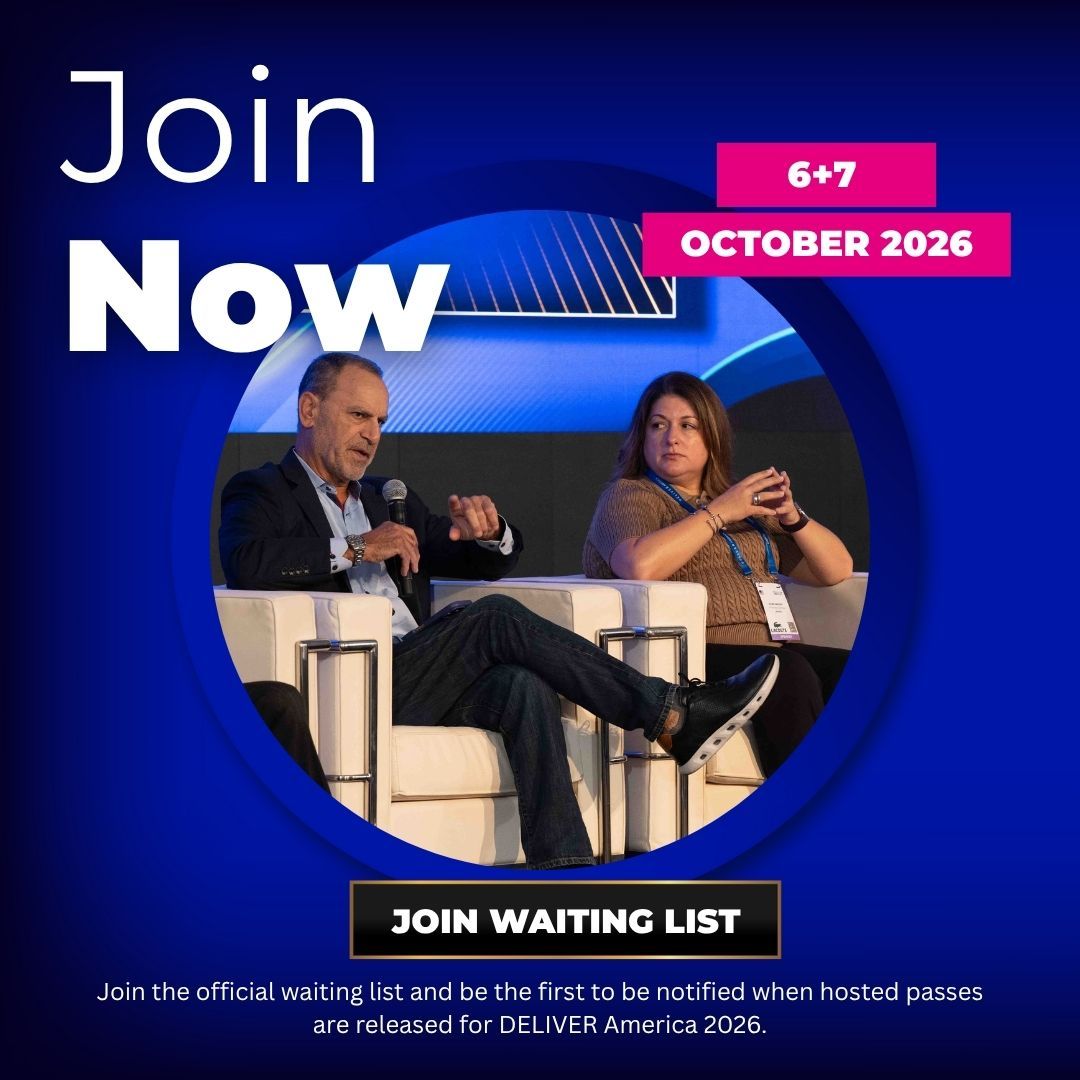Bonus Insights: Prashant Shah – Chief Supply Chain Officer, SwagUp
)
Prashant Shah is Chief Supply Chain Officer of SwagUp. He left India in 2001 to pursue his dreams in the United States, joined the United States Marine Corps the day after 9/11, and served for eight years until receiving a medical discharge for injuries sustained in Afghanistan and Iraq.
Prashant joined Target as an overnight unloader and worked his way up to Sr. Logistics Executive. He then joined Macy’s Distribution Center, becoming Director. From Bed Bath and Beyond to Drive Medical and Lasership, he has seamlessly orchestrated intricate operations.
At SwagUp, Prashant’s vision has converged with that of the CEO and Founder, Michael Martocci, to propel the company to a $1 billion enterprise within five years.
WATCH Prashant’s DELIVER America 2023 Keynote: Digital Transformation in Supply Chain: Exploring the Profound Impact of Emerging Technologies
DELIVER:
What's the first step of reassuring an organization and its employees that digital transformation is necessary, and that it can be beneficial to the business in the long term?
Prashant Shah:
Great question. So the first thing is to understand the problem. It could be that the people don’t have the right skills, or that the process does not make sense at that point. Or perhaps it's just not the right tech: doing a lot of manual stuff, probably, and that's creating human error. And the last one could be KPI. KPI is usually coming from what you want to solve: there is a raw data, but if you don't analyze it properly, your KPI is going to be completely off.
So it could be one of those four items. And then if it's the tech issue, you talk about AI and blockchain, how it’s going to help, and if there is an ROI behind it or not. I would say small companies have a year to a year-and-a-half of cash runway. So if you have two years as your ROI, this is more feasible, and you work within that.
DELIVER:
How do these organizations counter the fear that because these technologies are changing so rapidly, their investment might be obsolete by the next financial year?
Prashant:
I always tell my team, you have to be ‘end in mind’. Let's say that in three years, this is what we want to achieve. And then reverse engineer. And in that reverse engineering, you have this arrowhead, because you don't want to have your ROI exactly where your end number is. You want to have three-year planning, but with an ROI only up to two years. So now you have a net profit from two to three years, that will save enough for the new technology upgrades.
It’s just like a house project: one bathroom, one room after another. You have to continue to rebuild. A lot of individuals say okay, technology is going to solve the problem. I'm talking about reimagining the process. You need to understand the problem, and then apply what kind of technology you need. It depends on where you are and what you want to solve. Is it short term? Are you solving the 2%? Or are you solving the 98%? Because the first 98% will be the low hanging fruits: easy to solve, go after it, a bunch of things can get solved in one shot. And that's how you jump from where you are to the next phase. So it's about reimagining, and not just putting technology out there.
DELIVER:
How do you calm employees’ anxieties that these digital innovations may end up replacing them after they’ve provided the solutions to the company’s problems?
Prashant:
I get this question probably once every two or three months when I'm looking at some of these new things. What I have personally always done with my team is to gather them, first of all, in one communication area, making sure they all hear one voice. A leader should speak to everyone as a group, and then individually.
Number two, explain to them they are not getting replaced by AI: they are going to get replaced by a guy using AI. So make sure you stay up to date with all that education. I will train you so you can use it. There will be job displacement, yes. It doesn't mean you're going to leave the company; it may mean moving to something more around your skill set. And then we just leave it up to them. And when that decision is on that side, they feel much more relaxed.
I think it's about keeping it very simple for the employees. It doesn't matter if I'm talking to an hourly employee, or I'm talking to a VP: it has to be the same channels and understanding that this is new, and you just need to learn how to use it.
DELIVER:
What are the opportunities you see for AI in your particular sector?
Prashant:
Oh, my goodness, there are so many. I want to understand every dollar that's moving within the company. I'm looking at something that will understand and connect with WMS (warehouse management), TMS (transportation management) and ERP (enterprise resource planning) systems. Because we have so many vendors and supplier partners, but we don't have direct access to their systems. And that's an industry issue. We don't know the inventory, we don't know what's happening on that side. I would love to solve that with AI: if the money or product is moving, we can see it live.
The second part is the customers. For the Amazons and Googles and NASDAQs who are our clients, I would love to understand through AI if there is any anniversary coming, or is Google going to celebrate Employee Appreciation Day anytime soon? Then we can pitch those ideas to them, instead of them figuring it out. So it’s about being proactive.
So I wanted to understand the whys behind it, right? Why they're sending these swag packs. I understand the onboarding times, but I don't know the other facts, like what's happening in their company, with events or employee relationship days.
Steve Jobs said the only way to make everybody happy is to sell ice cream. But this is another one: anybody who gets a swag pack! They are happy because it's a free gift from a company, with that company’s logo. That’s something that builds pride in people. And they always bring a smile. This is the first company I have ever been at with zero returns. Nobody returns the gift. It's amazing to see that.


